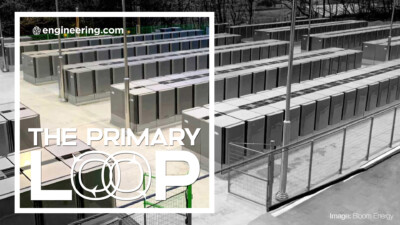The more people in the world with engineering skills, the better. The Cloud will get us there.
Two recent press releases made me stop and think about the role the Cloud plays in making the engineering industry—and the world—a better place. I’m not talking about giving corporations access to incalculable computational speeds and massive amounts of data storage. Instead, I’m talking about lowering the bar to entry to engineering skills and making the profession greener.

The first announcement in question was Atos’ European report, produced by Coleman Parkes Research, which outlines how the Cloud can help organizations reach net zero. The second was Qualcomm’s Report, which talks about how 5G technologies close the digital divide. How can these seemingly unrelated announcements create an ecosystem that can make the engineering industry greener and more equitable? Let’s dig into each separately and bring it all together in the end.
Closing the Digital Divide Can Fill in the Engineering Skills Gap
As of 2021, the International Telecommunication Union’s Facts and Figures report said that 63 percent of the world’s population is online—an increase of 17 percent, or 800 million people since 2019. Though it’s clear we still have some ways to go to close the digital divide—for example, the whopping 37 percent of the population still without the internet—for those 800 million people who gained access to the internet, and thus cloud technologies, it was life changing.
Over the past few years, various affordable engineering tools have been made available to users through their internet browser. Examples include Onshape for CAD, SimScale and OnScale for FEA and CFD simulations and Rescale for high-performance computing. Additionally, many tutorials on learning how to use those tools have popped up on video sharing and educational websites such as YouTube and Coursera. In short, when more people gain access to the internet, they also gain access to engineering tools and skills.
This isn’t simply hypothetical. According to Forbes, Ali-shah Jivraj’s family lost its business empire to the 1972 ethnic cleansings in Uganda. In the 1980’s, his family returned to Uganda and started to rebuild the life they once had. Then in 2006, Jivraj had a chance meeting with an electrician who repaired the family television. With that electrician’s help, Jivraj learned the trade and created Royal Electronics, a company that was making over $15 million by 2015. The business model was simple: source affordable and broken parts, fix them as needed, and use them to build high quality electronics such as televisions, DVD players and more. The result is that Royal pays a fraction of the cost for its supplies, and can undercut the rest of the market without losing product quality or profits.
Jivraj was lucky to have startup capital from his family, but it was that one chance meeting that sparked the education needed to build a potential company. Now imagine the potential of those 800 million people gaining access to affordable cloud-based engineering tools and training material. Not only will many of these individuals learn the engineering profession, potentially closing much of the current skills gap, but they might also become entrepreneurs like Jivraj.
According to Qualcomm’s report, 5G Fixed Wireless Access (FWA) can close the digital divide by 2032 if it is fully deployed. As a result, the global GDP will increase by $3.3 trillion and middle- and low-income economies could grow by five percent or more. Additionally, another 850 million people will have gained access to the internet from their homes for the first time. What engineering breakthroughs might they soon bring to the table?
“Qualcomm 5G technology has the potential to close the digital divide and create transformational change, particularly for disadvantaged and underserved populations,” said Kirti Gupta, Vice President, Technology & Economic Strategy, Qualcomm Incorporated in the release. “As a leader in advanced 5G solutions, it is our responsibility to ensure the world understands the importance and potential of this technology. With everyone pulling in the same direction, the world will benefit greatly from the widespread implementation of 5G mobile and FWA technology.”
Of course, along with this new access to engineering tools and information, these new internet citizens will also need the financial ability and stability to do something with them. One of the biggest threats to that stability is climate change, which the UN has reported will significantly impact poorer nations more than those with large economies.
This brings us to the other news from Atos, which talks about the environmental impact the Cloud can have on global warming.
How the Cloud Fits into the Engineering Industry’s Path to Zero Emissions
According to the Atos report, technology is an important part of decarbonization. About 58 percent of companies that digitize their operations say they are more successful in their green initiatives. This is because cloud-enabled technologies such as AI, machine learning, IoT and data analytics help organizations find more efficient ways to operate.
Diane Galbe, Senior Executive Vice President in charge of Sustainability & Net Zero Transformation Practice at Atos said, “The research clearly shows that decarbonization is now a priority for all businesses, and with the amount of data proliferating, not only within an organization but also between them, effective data management and cloud integration are becoming increasingly important. The power of digital in decarbonization cannot be underestimated. As the survey shows, there is a demand for more digitalization and measurement to support decarbonization objectives.”
An example of cloud technologies making an organization greener would be the use of predictive analytics to prevent a machine malfunction. Predicting when the machine will go down and planning for it ahead of time means that downtime, energy costs and consumption can all be reduced. In fact, according to the report, half of the businesses that migrate legacy systems to the cloud have seen measurable carbon reduction.
Christopher Wellise, Director of Sustainability at AWS, said about the report, “What is so interesting about this research is that business leaders who have already engaged cloud services think they are more successful in delivering carbon reductions. The data provided in the report backs up this view, as it shows that cloud offers nearly any company or public body a less carbon-intensive way of managing their IT. The other fascinating insight here is that 7 in 10 business leaders see the cloud as accelerating their journey to net zero emissions by two years or more.”
Some might argue that this isn’t really going green, as it only shifts IT emissions from the company onto cloud providers. There is some truth in that, and similar arguments have been made about electric vehicles. However, just like with electric vehicles, by culminating all the carbon usage into one location—a powerplant for cars, or the cloud provider for IT—it simplifies the process to reduce carbon emissions overall. Instead of thousands of cars or company IT resources becoming more efficient, only one organization needs to reduce its carbon impact. And once that company reduces its carbon impact, global impacts are greatly reduced overall.
The Cloud’s Feedback Loop for a Greener more Equitable Engineering Industry
The Cloud isn’t a silver bullet that can solve climate change or the digital divide. However, in the examples above, it’s clear that the Cloud creates ecosystems that are taking steps in the right direction to solve both problems. What’s more interesting is that each step towards these ecosystems feeds back on itself.
Going back to those 800 million people gaining access to the internet for the first time. Many of these individuals will become local entrepreneurs that will hire local talent. These companies will already start with most of their processes on the Cloud because that’s where the entrepreneur and their employees learned to operate. As a result, their carbon footprint will already be lower than a company that has yet to make the jump onto the Cloud. This means that though the number of skilled individuals increases, their impact on the environment will be lower compared to others around the world.
Additionally, like Jivraj’s electronics company, many of these budding companies will have an environmental spin. The goal of these organizations will be to bootstrap their way to success, which is why access to the Internet and the Cloud are so beneficial in the first place. Naturally, many will gravitate to a business model like that of Royal Electronics where they can take something cheap or abundant, such as broken electronic parts, and make them into something of high quality that can then be sold for below traditional market price while still turning a profit. In other words, many of these companies will be recycling, reducing and reusing their way to successful business models.
To sum it all up, the more people who learn the engineering trade via the internet and the Cloud, the more environmental the profession becomes and the more effectively we can build up countries around the world without increasing environmental impacts. In addition, this all leads to more people who can fill the skills gaps that are rampant in the engineering community.
Will the cloud solve the engineering industry’s lack of expertise problem? No, but it is going to enable a lot of people to become experts who would never have had such an opportunity before. Will it make the engineering industry green? No, but it will get us one step closer to a sustainable future—and that’s the future I want to live in.



